Actualidad

Publicación 2025 | Stored blood loses quality after four weeks
What We Did: We analyzed how the quality of leukodepleted stored red blood cells (RBCs) changes over the standard 42-day storage period used in blood banks. We focused on two key indicators of cell integrity—osmotic fragility (OF) and free hemoglobin (fHb)—to determine when stored RBCs begin to lose membrane stability.
What We Found: RBC quality remains relatively stable during the first 28 days of storage, but begins to decline rapidly after this point. After day 28, RBCs showed significantly increased fragility, making them more likely to break under stress.
Why It Matters: Patients with traumatic brain injury (TBI) and other neurocritical conditions rely heavily on optimal oxygen delivery to the brain. If stored RBCs lose stability and deformability after 28 days, transfusions may become less effective precisely when patients need them most. This work highlights the need to consider not only how much blood is transfused, but also the age and quality of the blood unit. Future use of quality markers such as OF may help clinicians personalize transfusion strategies and improve neurological recovery.
Publicación 2025 | Craniocervical Anomalies in Syndromic Craniosynostosis
Children born with certain genetic conditions, called syndromic craniosynostosis, may develop changes at the base of the skull as they grow. These changes can sometimes affect the brain and spinal cord.
What did we study? We looked at MRI scans from 77 children with these conditions to see how often problems appeared, and whether they changed over time.
What did we find? A condition called Chiari malformation type I (CMI) was found in some children, especially those with Pfeiffer and Crouzon syndromes. Other changes, like platybasia (flattening of the skull base), odontoid retroflexion (a tilt in the neck bone), and syringomyelia (fluid pockets in the spinal cord), were rare. These problems tended to become more noticeable as children got older.
Why does it matter? Even though most children did not have serious changes, regular follow‑up with MRI is important. Detecting these conditions early helps doctors plan care and prevent complications as children grow.
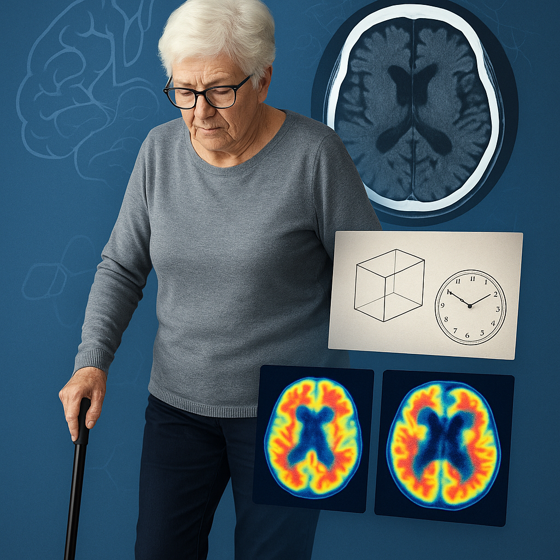
Financiación FIS 2025 para avanzar en el diagnóstico de demencias tratables
Nuestra unidad ha sido seleccionada en la última convocatoria de Becas FIS (septiembre 2025) para desarrollar el proyecto “Hidrocefalia de presión normal: integración de monitorización no invasiva, perfiles cognitivos y biomarcadores en LCR para predecir resultados quirúrgicos” (PI25/01408).
La hidrocefalia normotensiva idiopática (iNPH) es una causa tratable de demencia que, sin embargo, suele confundirse con otras enfermedades neurodegenerativas como el Alzheimer. Este proyecto busca mejorar el diagnóstico y la selección de pacientes mediante herramientas innovadoras: monitorización de la presión intracraneal, análisis de biomarcadores en líquido cefalorraquídeo y caracterización de perfiles cognitivos.
El objetivo es optimizar los resultados quirúrgicos y ofrecer una alternativa terapéutica eficaz a personas mayores que, de otro modo, podrían quedar sin tratamiento.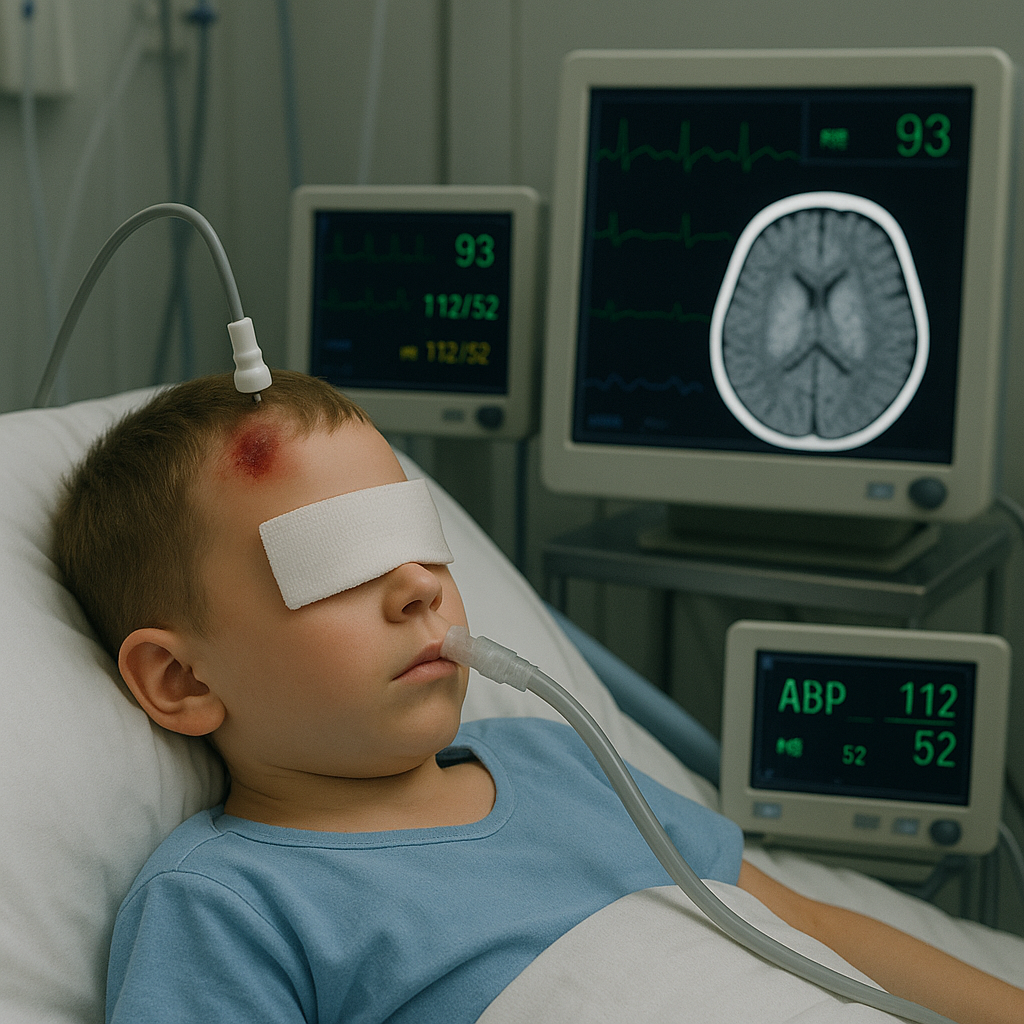
Publicación 2025 | KidsBrainIT: Visualizing the Impact of Cerebral Perfusion Pressure Burden on Pediatric TBI Outcomes
This multicenter study, in which our institution actively participated, provides the first evidence that specific thresholds of intracranial pressure (ICP) and cerebral perfusion pressure (CPP) are independently associated with long-term outcomes in children with traumatic brain injury (TBI).
The results indicate that maintaining CPP within a defined optimal range—particularly between 56 and 89 mmHg —is associated with improved neurological recovery. Importantly, the lower threshold identified in this study exceeds the current guideline recommendations, suggesting that existing pediatric CPP targets may require revision to avoid suboptimal outcomes.
These findings underscore the critical importance of individualized, evidence-based hemodynamic management in pediatric TBI, particularly with regard to continuous monitoring and control of CPP to mitigate secondary brain injury and enhance long-term recovery.

Nuevo curso SmartCampus 2025 | Hidrocefalia Normotensiva: Un Enfoque Clínico Integral (SC-H3-2025)
Este curso intensivo de cuatro módulos está diseñado para neurólogos, neurocirujanos, investigadores clínicos y otros profesionales interesados en profundizar en el diagnóstico, fisiopatología y manejo de la hidrocefalia normotensiva (NPH). A través de sesiones teóricas, análisis de casos clínicos, revisión de estudios de imagen, y discusión de herramientas diagnósticas como la monitorización de la presión intracraneal (PIC) y tests hidrodinámicos, los participantes desarrollarán una visión amplia e integral de esta entidad compleja y muchas veces infradiagnosticada. Este curso incluirá una combinación de clases en video, discusiones interactivas, webinars presenciales, cuestionarios y aprendizaje basado en casos clínicos. Los participantes también tendrán acceso a materiales complementarios, como artículos de investigación y guías de práctica clínica.
Todo el contenido del curso estará disponible en el aula virtual para que avances a tu propio ritmo dentro de los plazos establecidos. El curso dispondrá de un apartado de foros y discusiones interactivas para el intercambio de ideas entre participantes y docentes.
Objetivos de aprendizaje del curso
- Comprender la fisiopatología y la epidemiología de la hidrocefalia normotensiva
- Identificar las manifestaciones clínicas y los diagnósticos diferenciales
- Conocer las diferentes herramientas para la evaluación cognitiva
- Conocer las principales herramientas diagnósticas, incluyendo estudios de imagen y evaluación de la dinámica del LCR
- Interpretar pruebas de neuroimagen y ser capaz de evaluar los resultados
- Conocer la mejor evidencia disponible sobre la hidrocefalia normotensiva
- Evaluar las opciones terapéuticas, con énfasis en la derivación ventriculoperitoneal
- Conocer la física básica necesaria para comprender el funcionamiento de las válvulas
- Clarificar conceptos sobre dispositivos antisifón y de control gravitacional
- Entender el papel de los biomarcadores en LCR en la patofisiología de la hidrocefalia
- Analizar casos clínicos para aplicar el conocimiento teórico en contextos prácticos
- Familiarizarse con las tendencias actuales de investigación y terapias emergentes
Los interesados en registarse en este curso pueden hacerlo ya en este enlace.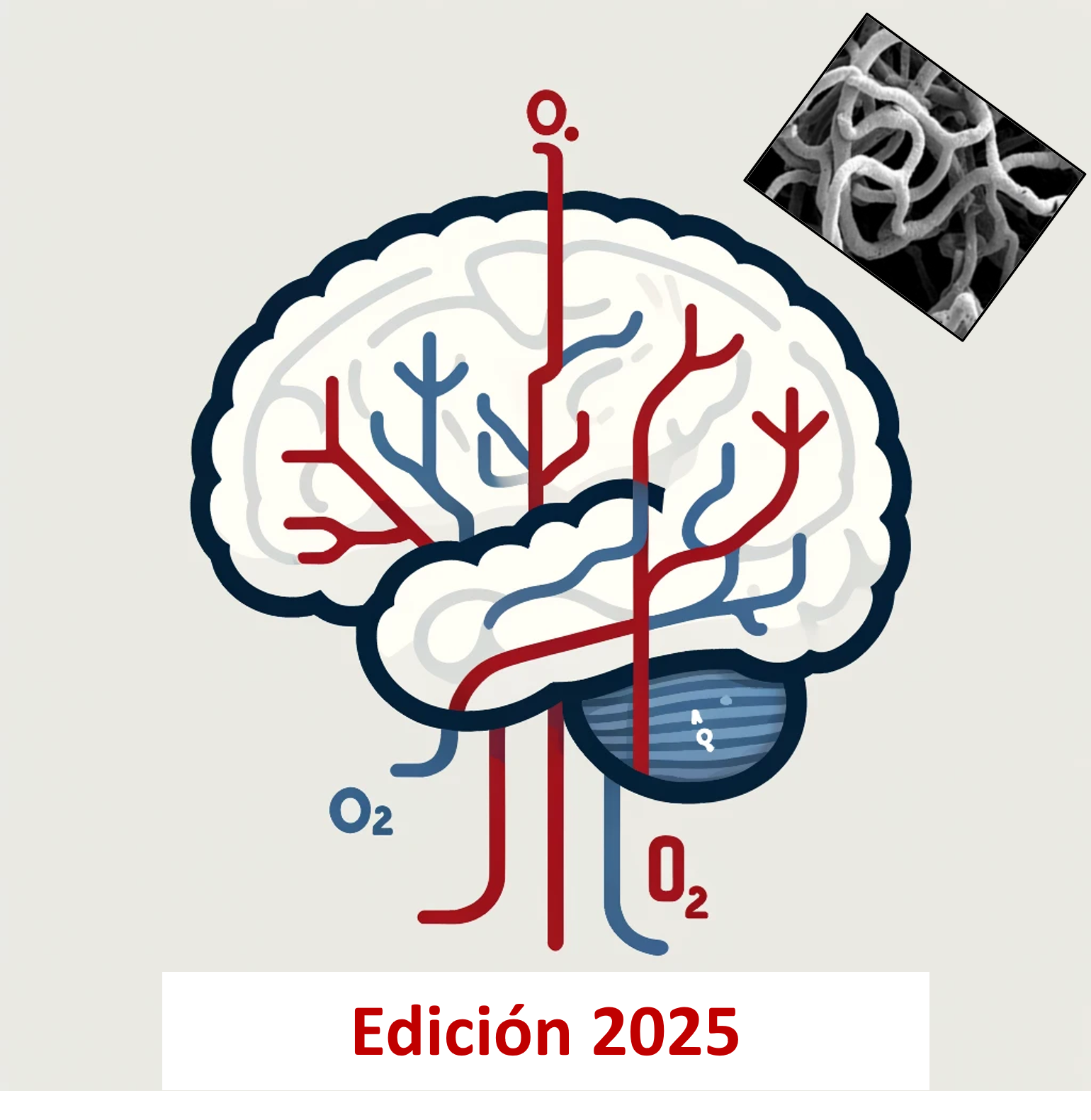
Curso SmartCampus 2025 | Fundamentos fisiopatológicos de la hipoxia tisular (SC-NCri1-2025)
La monitorización de la presión intracraneal (PIC) es imprescindible en el paciente con patología neurológica aguda en riesgo de hipertensión intracraneal. Sin embargo, la PIC aporta una imagen incompleta de la compleja fisiopatología del paciente neurocrítico. La monitorización de la oxigenación, el metabolismo y el flujo sanguíneo cerebral, así como de la capacidad que tiene el encéfalo de regular el flujo ante los cambios de presión de perfusión (autorregulación), son métodos complementarios para el manejo personalizado del paciente con lesiones cerebrales agudas.
Esta nueva edición de este curso (SC-NCri1-2025) pretende ser una introducción al tema de todo el itinerario formativo dedicado al paciente neurocrítico.
Nuestra intención en esta edición, es dar una visión renovada y crítica de los aspectos más fundamentalistas de los postulados de la medicina basada en la evidencia aplicados a la monitorización multimodal, revisar los principios básicos del transporte cerebral de oxígeno y actualizar los diferentes tipos de monitorización cerebral que ayudan al clínico a establecer diagnósticos diferenciales más precisos de la hipoxia tisular cerebral. Esta metodología permite implementar estrategias terapéuticas personalizadas y dirigidas a corregir situaciones en las que el aporte cerebral de O2 se encuentra comprometido. El diagnóstico diferencial y el tratamiento dirigido son siempre un primer paso de la nueva ‘medicina de precisión’ para mejorar el pronóstico del paciente con lesiones cerebrales agudas.

Publicación 2025 | Toward Reliable Diffuse Optics in Neurocritical Care
A shortcoming of the routine clinical use of diffuse optics (DO) in the injured head has been that the results from commercial near-infrared spectroscopy-based devices are not reproducible, often give physiologically invalid values, and differ among systems. Besides the limitations due to the physics of continuous-wave light sources, one culprit is the head heterogeneity and the underlying morphological and functional abnormalities of the probed tissue.
Aim The aim was to investigate the effect that different tissue alterations in the damaged head have on DO signals and provide guidelines to avoid data misinterpretation. DO measurements and computed tomography scans were acquired on brain-injured patients. The relationship between the signals and the underlying tissue types was classified on a case-by-case basis.
Results Examples and suggestions to establish quality control routines were provided. The findings suggested guidelines for carrying out DO measurements and speculations toward improved devices.
Conclusions We advocate for the standardization of the DO measurements to secure a role for DO in neurocritical care. We suggest that blind measurements are unacceptably problematic due to confounding effects and care using a priori and a posteriori quality control routines that go beyond an assessment of the signal-to-noise ratio that is typically utilized.
Publicación 2025 | 'Benign' External Hydrocephalus: Insights from intracranial pressure monitoring
Some children with large or rapidly growing heads are diagnosed with a condition called 'benign' external hydrocephalus (BEH). This condition has often been considered harmless, but some children show signs of developmental delay or other symptoms. This study aimed to understand whether pressure inside the brain (intracranial pressure, or ICP) is truly normal in these cases, and whether monitoring it could help guide treatment.
What We Did: We followed 36 young children diagnosed with BEH. Each child had their brain pressure monitored continuously for at least 48 hours using a small sensor placed on the surface of the brain. We looked at average pressure levels, pressure wave patterns, and how these changed over time—especially during sleep.
What We Found: Over half of the children showed signs like delayed motor or language development. Many had pressure readings that were higher than expected, especially at night. Most children had unusual wave patterns (called B waves) during sleep, which can be a sign of unstable pressure. In some children, the pressure rose sharply and repeatedly—suggesting their brain might not be handling pressure changes well. Because of these findings, 30 of the 36 children eventually received a shunt (a device to drain excess fluid from the brain).
What This Means: Even though BEH is often considered a mild or “benign” condition, our study shows that some children may actually have harmful pressure changes in the brain. Continuous ICP monitoring can help identify which children might benefit from surgery and prevent long-term problems.
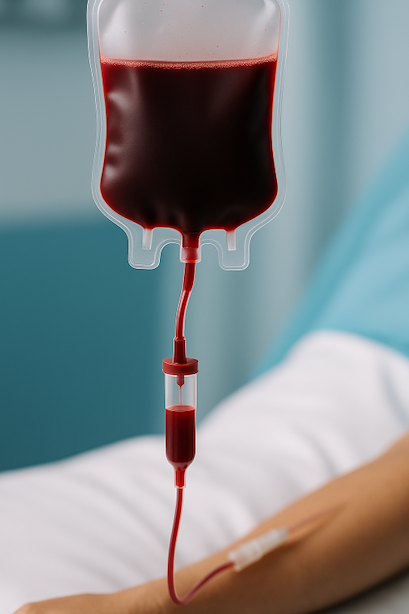
Publicación 2025 | Hybrid Optical Monitoring of Transfusion Effects in Critical Illness
Significance: Red blood cell transfusions (RBCTs) to restore hemoglobin concentration and hematocrit values in anemic patients are debated in critical illness.
This study presents a novel, non-invasive hybrid diffuse optical monitoring approach for critically ill patients receiving red blood cell transfusions. This technique enables continuous, real-time assessment of microvascular blood oxygenation, oxygen metabolic rate, and blood flow—parameters that are typically inaccessible in this population.
We demonstrate the first application of this method to characterize and quantify physiological responses to transfusion therapy in both cerebral and peripheral tissues. By elucidating the effects of transfusion, which remain debated in critically injured patients, our findings enhance understanding of its systemic impact. The feasibility demonstrated here supports the future development of individualized transfusion strategies aimed at minimizing complications such as hypoxia and ischemia and ultimately improving clinical outcomes.
¡Participa en nuestro estudio sobre la malformación de Chiari tipo 1!
La malformación de Chiari tipo 1 es una enfermedad rara del sistema nervioso central, caracterizada por el descenso anómalo de las amígdalas cerebelosas a través del foramen magno. Esta alteración puede afectar funciones motoras, cognitivas y emocionales, repercutiendo significativamente en la calidad de vida de quienes la padecen. A pesar de su relevancia clínica, el conocimiento sobre sus implicaciones neurocognitivas y afectivas sigue siendo limitado.
Con el objetivo de avanzar en la comprensión de estos aspectos y validar instrumentos de evaluación específicos que contribuyan a un diagnóstico y tratamiento más precisos, en el Hospital Universitari Vall d’Hebron (HUVH) y el Institut de Recerca Vall d’Hebron (VHIR) estamos llevando a cabo un estudio pionero en este campo. Actualmente, buscamos personas voluntarias sanas que deseen colaborar formando parte del grupo control de nuestra investigación. La participación consiste en una evaluación neuropsicológica sencilla, basada en pruebas de papel y lápiz, con una duración aproximada de una hora. Su colaboración es fundamental para mejorar el abordaje clínico de esta enfermedad.
¿Por qué participar?
1. Contribuirás al avance del conocimiento científico sobre la malformación de Chiari tipo 1, una patología poco comprendida pero con importantes implicaciones clínicas; 2. Ayudarás a mejorar la detección y el tratamiento de las alteraciones cognitivas y emocionales asociadas a esta enfermedad, beneficiando potencialmente a futuros pacientes; 3. La participación no conlleva ningún riesgo y es completamente voluntaria; puedes retirarte en cualquier momento sin repercusión alguna.
Investigadora principal: Dra. Maria Antonia Poca, Servicio de Neurocirugía, Hospital Universitari Vall d’Hebron.
Proyecto FIS: PI22/01082| Codigo proyecto CEIC HUVH: PR(AG)49/2023
Si estás interesado/a en participar o deseas más información, contáctanos.

Publication 2024 |Visualization of the Intracranial Pressure and Time Burden in Childhood Brain Trauma
To validate the intracranial pressure (ICP) dose-response visualization plot for the first time in a novel prospectively collected pediatric traumatic brain injury (pTBI) data set from the multi-center, multi-national KidsBrainIT consortium.
Prospectively collected minute-by-minute ICP and mean arterial blood pressure time series of 104 pTBI patients were categorized in ICP intensity-duration episodes. These episodes were correlated with the 6-month Glasgow Outcome Score (GOS) and displayed in a color-coded ICP dose-response plot. The influence of cerebrovascular reactivity and cerebral perfusion pressure (CPP) were investigated. The generated ICP dose-response plot on the novel data set was similar to the previously published pediatric plot.
This study confirmed that higher ICP episodes were tolerated for a shorter duration of time, with an approximately exponential decay curve delineating the positive and negative association zones. ICP above 20 mm Hg for any duration in time was associated with poor outcome in our patients. Cerebrovascular reactivity state did not influence their respective transition curves above 10 mm Hg ICP. CPP below 50 mm Hg was not tolerated, regardless of ICP and duration, and was associated with worse outcome. The ICP dose-response plot was reproduced in a novel and independent pTBI data set. ICP above 20 mm Hg and CPP below 50 mm Hg for any duration in time were associated with worse outcome. This highlighted a pressing need to reduce pediatric ICP therapeutic thresholds used at the bedside.
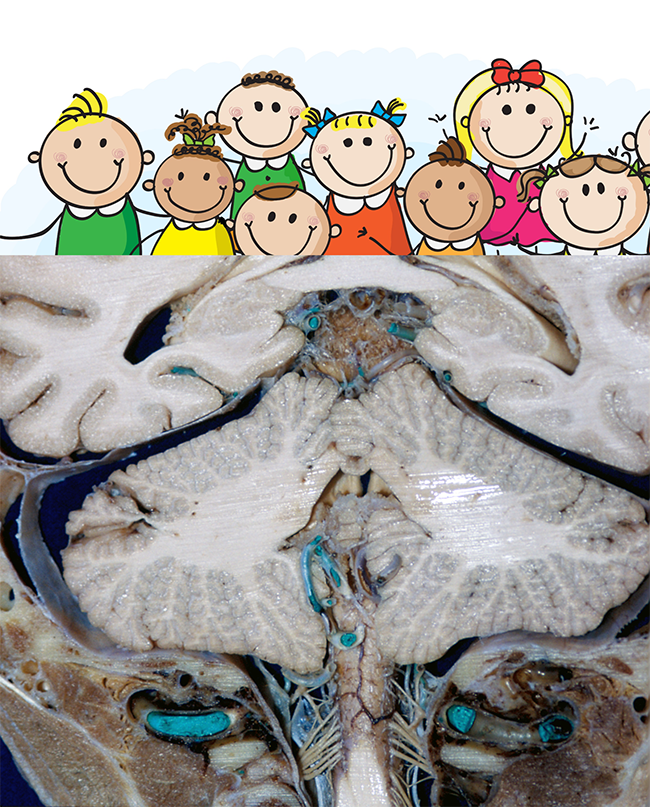
Publication 2024 | Surgical Outcomes in Chiari 1 and Chiari 1.5 Malformation Treated by Posterior Fossa Reconstruction: A Comprehensive Analysis of 110 Pediatric Cases
The purpose of the current single-center study is to critically assess the one-year surgical outcomes of a cohort of 110 children with CM-1 or CM-1.5 who were treated using “posterior fossa reconstruction” (PFR), a surgical technique described in 1994 that has since been used in both adults and children. Methods:Patients included in this study were selected from a group of children with CMs who were operated on in our Pediatric Neurosurgical Unit between 1 January 2007 and 31 November 2023. Surgical outcome was defined based on clinical and neuroradiological results as very good, good, or bad. Results:The mean age of our child cohort was 9.9 ± 4.7 years, with 54 girls (49%) and 56 boys (51%). Sixty-six children had CM-1 (60%) while forty-four had CM-1.5 (40%). Following surgery, there was no neurological worsening or death among the children. Most children (70%) had an uneventful recovery and were discharged home on average one week after surgery. However, in 33 children (30%), we recorded at least one postoperative adverse event. The one-year surgical outcome was excellent in 101 children (91.9%), good in 5 (4.5%), and bad in 4 (3.6%). Conclusions: PFR significantly enlarges the volume of the posterior fossa and recreates a CSF environment that generates buoyancy of the cerebellum, with a high percentage of excellent and good clinical results evaluated one year post-surgery.

Spanish translation of the posttraumatic stress disorder checklist | New publication!
The present study translated the PTSD Checklist for DSM-5 to Spanish and validated it in a sample of patients with TBI 6 months after the injury. Methods: The study included 233 patients (162 males and 71 females) recruited from four Spanish hospitals within 24 h of traumatic brain injury. Results: The analysis confirmed the internal consistency of the translated instrument (α = 0.95). The concurrent validity of the instrument was confirmed based on high correlation coefficients of 0.7 and 0.74 with the General Anxiety Disorder-7 (GAD-7) and Patient Health Questionnaire (PHQ-9), respectively. Conclusion: Overall, the results suggest that the Spanish translation of the PCL-5 is a reliable and valid instrument for screening PTSD symptoms among Spanish TBI patients. The Spanish translation of the PCL-5 is also presented in the manuscript.
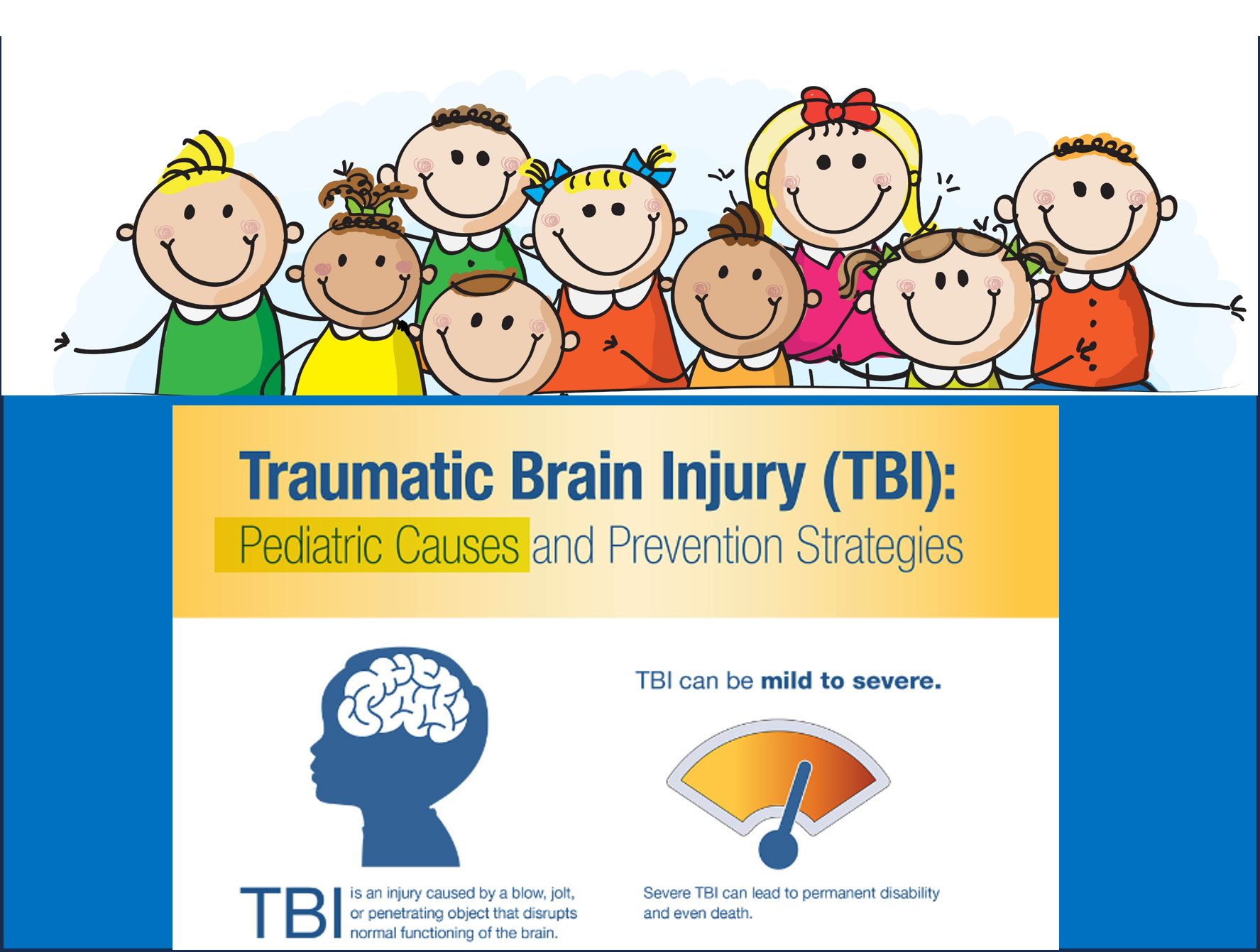
Intracranial Pressure and Time Burden in Childhood Brain Trauma | New publication!
Prospectively collected minute-by-minute ICP and mean arterial blood pressure time series of 104 TBI children were categorized in ICP intensity-duration episodes. These episodes were correlated with the 6-month Glasgow Outcome Score (GOS) and displayed in a color-coded ICP dose-response plot. The influence of cerebrovascular reactivity and cerebral perfusion pressure (CPP) were investigated. The generated ICP dose-response plot on the novel data set was similar to the previously published pediatric plot. This study confirmed that higher ICP episodes were tolerated for a shorter duration of time, with an approximately exponential decay curve delineating the positive and negative association zones. ICP above 20 mm Hg for any duration in time was associated with poor outcome in our patients. Cerebrovascular reactivity state did not influence their respective transition curves above 10 mm Hg ICP. CPP below 50 mm Hg was not tolerated, regardless of ICP and duration, and was associated with worse outcome. The ICP dose-response plot was reproduced in a novel and independent data set. ICP above 20 mm Hg and CPP below 50 mm Hg for any duration in time were associated with worse outcome. This highlighted a pressing need to reduce pediatric ICP therapeutic thresholds used at the bedside.
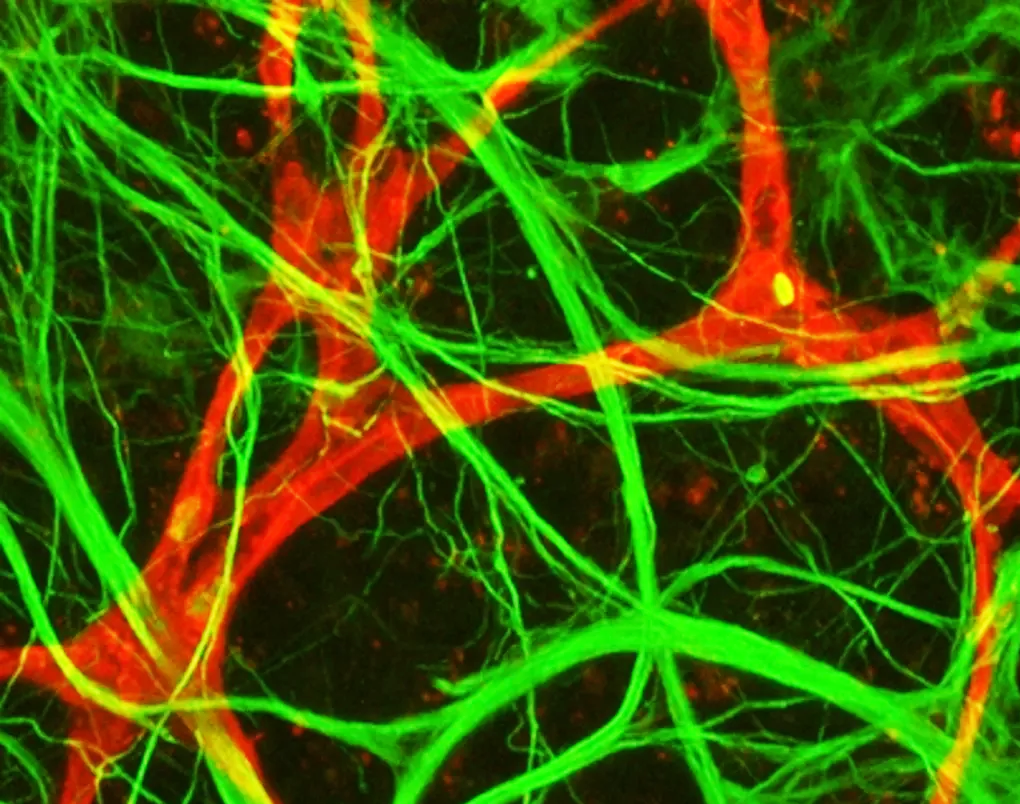
Biomarkers in predicting CT scan results and neurological outcomes in children with traumatic brain injury | New publication!
In light of the burden of traumatic brain injury (TBI) in children and the excessive number of unnecessary CT scans still being performed, new strategies are needed to limit their use while minimising the risk of delayed diagnosis of intracranial lesions (ICLs). Identifying children at higher risk of poor outcomes would enable them to be better monitored. The use of the blood-based brain biomarkers glial fibrillar acidic protein (GFAP) and ubiquitin carboxy-terminal hydrolase-L1 (UCH-L1) could help clinicians in this decision. The overall aim of this study is to provide new knowledge regarding GFAP and UCH-L1 in order to improve TBI management in the paediatric population.
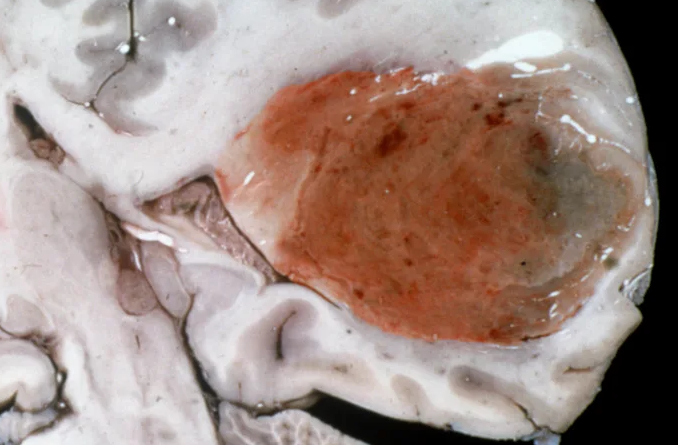
Glioblastoma Pseudoprogression Discrimination Using Multiparametric Magnetic Resonance Imaging | New Publication!
Pseudoprogression in glioblastoma presents a common challenge during clinical follow-up, significantly impacting disease management. In this study, the potential of multiparametric magnetic resonance imaging (MRI) alongside principal component analysis and advanced machine learning techniques was explored to distinguish pseudoprogression from true tumor progression. This study, conducted in the extended neurosurgery service of both Vall d'Hebron and Arnau de Vilanova University Hospitals, sheds light on the ability of multiparametric MRI combined with analysis and machine learning techniques to enhance discrimination between glioblastoma pseudoprogression and true tumor progression. The findings offer valuable insights to optimize diagnostic approaches and improve clinical management of this devastating disease.
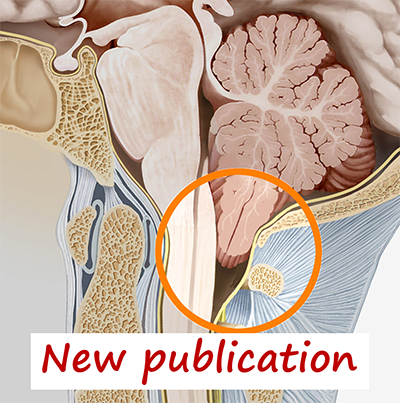
A Critical Update of the Classification of Chiari and Chiari-like Malformations | New Publication!
Chiari malformations are a group of craniovertebral junction anomalies characterized by the herniation of cerebellar tonsils below the foramen magnum, often accompanied by brainstem descent.
This review aims to examine the various classification approaches employed and proposes a simplified scheme to differentiate between different types of tonsillar herniations. Furthermore, it explores the most appropriate terminology for acquired herniation of cerebellar tonsils and other secondary Chiari-like malformations. Recent advances in magnetic resonance imaging (MRI) have revealed a higher prevalence and incidence of Chiari malformation Type 1 and identified similar cerebellar herniations in individuals unrelated to the classic phenotypes described by Chiari. As we reassess the existing classifications, it becomes crucial to establish a terminology that accurately reflects the diverse presentations and underlying causes of these conditions.
This paper contributes to the ongoing discussion by offering insights into the evolving understanding of Chiari malformations and proposing a simplified classification and terminology system to enhance diagnosis and management.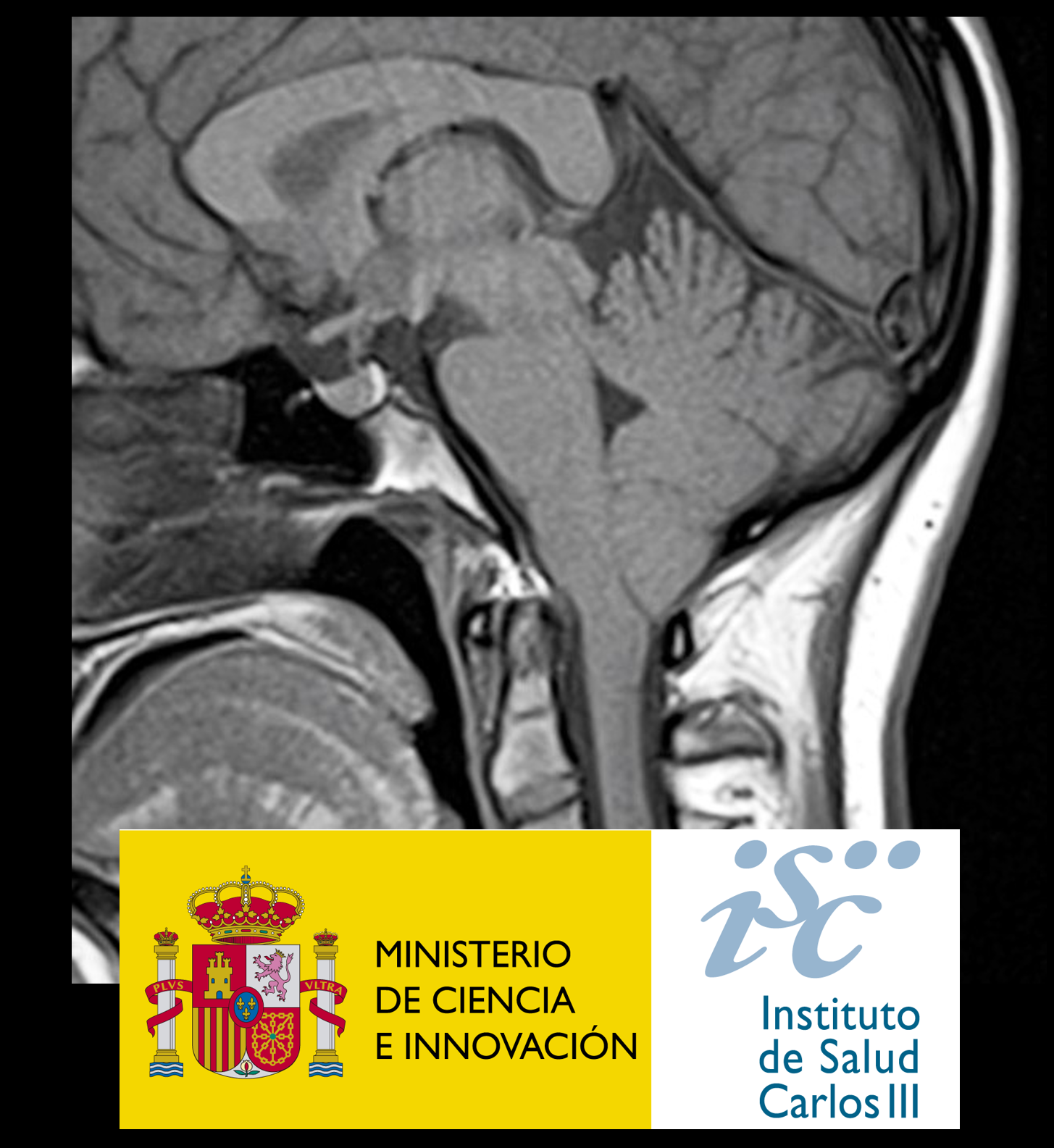
Proyecto investigación Chiari | Concesión beca FIS
En la última convocatoria de Becas FIS resuelta en diciembre de 2022 nuestra unidad ha recibido financiación para desarrolar en los próximos tres años el proyecto "Impacto del síndrome afectivo-cognitivo cerebeloso (Síndrome de Schmahmann) en los pacientes con una malformación de Chiari tipo 1" (PI22/01082) .
En la actualidad se acepta que el cerebelo participa como un modulador de funciones cognitivas como la atención, la memoria, el lenguaje, capacidades visuoconstructivas, funciones ejecutivas y en el afecto y las emociones. El denominado síndrome afectivo-cognitivo cerebeloso descrito en 1998 se caracteriza por déficits en las funciones ejecutivas, en el procesamiento lingüístico, en la cognición espacial y en la regulación afectiva. Nuestro estudio pretende determinar la repercusión de la malformacion de Chiari 1 y 1.5 en la cognición, la regulación afectiva, la personalidad y su impacto en la calidad de vida de estos pacientes. Relevancia: Se pretende que este estudio permita verificar/refutar la existencia de este síndrome en los pacientes con una malformación de Chiari y su perfil cognitivo-afectivo. Esto permitirá, diseñar en un futuro utilizar una herramienta de evaluación adecuada como la escala de Schmahmann para el cribaje de estos pacientes, objetivar las dificultades neuropsicológicas que presentan y programar intervenciones personalizadas dirigidas a mejorarlas.
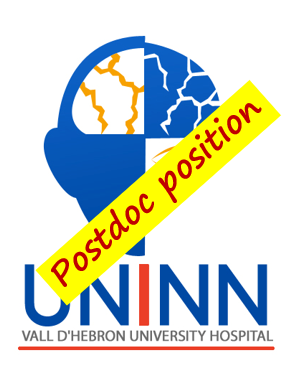
Post-Doctoral Research position
VHIR offers a postdoctoral position within the Unidad de Investigación de Neurotraumatologia y Neurocirugia (UNINN). The candidate will participate in projects focused on the basic and clinical research on traumatic brain injury, brain edema and hydrocephalus.
Main responsibilities and duties:1. Project Management; 2. Project Applications; 3. Writing scientific reports and papers; 4. Attending projects meetings and scientific conferences and 5. Support PhD researchers. Required qualifications: 1. Ph.D. degree with a strong research background in neurobiology within the past 5 years; 2. Bench work experience is required; 3. Proactive, dynamic, and outstanding organizational skills; 4. Good communication skills and fluency in spoken and written English (minimum level in English: C); 5. Experience on international project management and project applications and 6. A demonstrated ability to work in a multidisciplinary and diverse team.
Perceived Utility of Intracranial Pressure Monitoring in Traumatic Brain Injury | New publication!
OBJECTIVE:To study the monitoring practices of an established expert panel (the clinical working group from the Seattle International Brain Injury Consensus Conference effort) to examine the match between monitoring guidelines and their clinical decision-making and offer guidance for clinicians considering monitor insertion. METHODS: We polled the 42 Seattle International Brain Injury Consensus Conference panel members' ICP monitoring decisions for virtual patients, using matrices of presenting signs (Glasgow Coma Scale [GCS] total or GCS motor, pupillary examination, and computed tomography diagnosis). Monitor insertion decisions were yes, no, or unsure (traffic light approach). We analyzed their responses for weighting of the presenting signs in decision-making using univariate regression.
CONCLUSION: Candidacy for ICP monitoring exceeds published indicators for monitor insertion, suggesting the clinical perception that the value of ICP data is greater than simply detecting and monitoring severe intracranial hypertension. Monitor insertion heatmaps are offered as potential guidance for ICP monitor insertion and to stimulate research into what actually drives monitor insertion in unconstrained, real-world conditions.

Noninvasive evaluation of hyperventilation therapy | New UNINN publication!
The ICFO together with the UNINN have published in the J. Neurotrauma a paper dedicated to non-invasive monitoring of hyperventilation in patients with TBI. Hyperventilation (HV) therapy uses vasoconstriction to reduce intracranial pressure (ICP) by reducing cerebral blood volume. However, as HV also lowers cerebral blood flow (CBF), it may provoke misery perfusion (MP) where the decrease in CBF is coupled with increased oxygen extraction fraction (OEF). MP may rapidly lead to the exhaustion of brain energy metabolites, making it vulnerable to ischemia.. Our study provides pilot data demonstrating that bedside transcranial hybrid near-infrared spectroscopies could be utilized to assess potential misery perfusion.

Diagnosis and Treatment of Normal-Pressure Hydrocephalus Syndrome | New Publication!
We have collaborated as guest editors in the special issue on Diagnosis and Treatment of Normal-Pressure hdrocephalus Syndrome This focused issue has been completed and published in the Clinical Neurology section of the Jourrnal of Clinical Medicine (IF: 4.96).
In this focused issue, ten papers have been published that review many controversial aspects regarding the screening methods, diagnostic tests, and treatment of patients with NPH that are relevant to individualizing treatment and improving outcomes after surgery. Three of the 10 published papers come from the Vall d'Hebron University Hospital's neurosurgery department. One of our major contributions has been a thorough analysis of the many kinds of devices that can be used to shunt patients with NPH. We stress the need of the neurosurgeon being knowledgeable about the variations among commercially available devices and avoiding the usual error of selecting a one-size-fits-all system for this particular patient population. We emphasize the need for the neurosurgeon to be aware of the differences among commercially-available devices and to avoid the common mistake of choosing a one-size-fits-all system for this group of patients. The variables to take into account for selecting the most appropiate CSF device are discussed. We believe that a more rational approach to shunting increases the chances of a positive outcome and increase the quality of life of patients with this syndrome.

Non-invasive diagnostic of benign external hydrocephalus in kids | New UNINN publication!
Benign external hydrocephalus (BEH) is considered a self-limiting pathology with a good prognosis. However, some children present a pathological intracranial pressure (ICP) characterized by quantitative and qualitative alterations (the so-called B-waves) that can lead to neurological sequelae.
We recruited eleven patients (median age 16 months, range 7 to 55 months) with BEH and an unfavorable evolution requiring ICP monitoring. Bedside, nocturnal monitoring using near-infrared time-resolved and diffuse correlation spectroscopies synchronized to the clinical monitoring was performed. We were able to detect noninvasively StO2 and BFI variations —with optical techniques in BEH children. This new technique helps in managing children with BEH.
Cochrane Injuries Group
We are pleased to share the news that one of the members of our Research Unit (J. Sahuquillo, Department of Neurosurgery, Vall d’Hebron University Hospital) has recently joined the Cochrane Injuries group as a Clinical editor.
The Cochrane Injuries group is part of the Cochrane Collaboration, an international not-for-profit and independent organisation, dedicated to making up-to-date, accurate information about the effects of healthcare. The work involves preparing, maintaining and promoting systematic reviews for the prevention, treatment and rehabilitation of traumatic injury, including the emergency resuscitation of seriously injured and burned patients.

Secondary Analysis of the RESCUEicp Randomized Clinical Trial | Publicación UNINN
Our unit collaborated actively in the design and implementation of the multicenter multinational RESCUEicp clinical trial about the use of decompressive craniotomy in the management of patients with raised intracranial pressure which results were published in 2016. The secondary analysis of the RESCUEicp have been published on June 6, 2022 to explore the 24-month outcomes for patients with traumatic intracranial hypertension who receive a decompressive craniectomy. Findings: In this prespecified secondary analysis of a randomized clinical trial, 408 adults received either decompressive craniectomy or standard care. The Extended Glasgow Outcome Scale was used to assess 24-month outcomes in this secondary analysis; surgical patients had sustained reduced mortality but higher rates of vegetative state, severe disability, and moderate disability at 24 months.
Conclusions and Relevance.At 24 months, patients with surgically treated posttraumatic refractory intracranial hypertension had a sustained reduction in mortality and higher rates of vegetative state, severe disability, and moderate disability. Patients in the surgical group were more likely to improve over time vs patients in the medical group.
Publicación UNINN | Conferencia Consenso Chiari en Adultos | Neurological Sciences
El servicio de Neurocirugía del Hospital Universitario Vall d'Hebron ha participado en la publicación de las primeras recomendaciones internacionales para el diagnóstico y tratamiento de la malformación de Chiari tipo 1 en el adulto. Las malformaciones de la charnela craneocervical son una de las líneas de investigación traslacional consolidadas de la UNINN.
Un panel multidisciplinar de expertos elaboraron un documento de consenso. Después de una revisión basada en la evidencia y debates posteriores, se formularon 63 declaraciones agrupadas en 4 dominios (definición y clasificación/planificación/cirugía/siringomielia).El documento de consenso introduce 63 recomendaciones de expertos dirigidas a médicos e investigadores que tratan a adultos con Chiari y siringomielia.

Sulfonylurea Receptor 1 in Central Nervous System Injury | Publicación UNINN
In the last few years, our research unit has focused on the study of Sulfonylurea receptor 1 (SUR1) as a target receptor for the management of postraumatic brain edema. In this focused review Jha et al. update the role of SUR1 in CNS injuries and their treatment.

Conferencia Consenso Chiari en Pacientes pediátricos | Publicación | Neurological Sciences
El servicio de Neurocirugía del Hospital Universitario Vall d'Hebron ha participado en esta segunda publicación de las recomendaciones internacionales para el Diagnóstico y Tratamiento de la malformación de Chiari tipo 1 en pacientes en edad pediátrica. Las malformaciones de la charnela craneocervical son una de las líneas de investigación traslacional consolidadas de la UNINN.Chiari malformation type 1 (CM1) is a rare condition where agreed classification and treatment are still missing. The goal of this study is to achieve a consensus on the diagnosis and treatment of CM1 in children.
The consensus document consists of 58 statements (24 on diagnosis, 34 on treatment), serving clinicians and researchers following children with CM1. There is a clear need for establishing an international network and registry and to promote collaborative studies to increase the evidence base and optimize the long-term care of this patient population.

Neurodevelopmental profile in children with benign external hydrocephalus syndrome | Publicación UNINN
New! The management of children with benign external hydrocephalus (BEH) remains controversial. Most BEH children do well in the long-term, but a substantial number have temporary or permanent psychomotor delays. The study aims to assess the prevalence and pattern of neurodevelopmental delay in a cohort of children with BEH. Results: Eighteen children (43%) presented statistically lower scores in the gross motor and composite motor of the Bayley-III scales compared to their healthy peers. Conclusion: In BEH, it is important to establish a diagnostic algorithm that helps to discriminate BEH patients that have self-limiting delays from those at risk of a persistent delay that should be referred for additional studies and/or interventions that might improve the natural evolution of a disease with high impact on the children and adult’s quality of life.

A management algorithm for adult patients with both brain oxygen and intracranial pressure monitoring: the Seattle International Severe Traumatic Brain Injury Consensus Conference (SIBICC) | Publicación UNINN
Current guidelines for the treatment of adult severe traumatic brain injury (sTBI) consist of high-quality evidence reports, but they are no longer accompanied by management protocols. We aimed to establish a modern sTBI protocol for adult patients with both intracranial pressure (ICP) and brain oxygen monitors in place.
Our consensus working group consisted of 42 experienced and actively practicing sTBI opinion leaders from six continents. We established three distinct treatment protocols, each with three tiers whereby higher tiers involve therapies with higher risk. One protocol addresses the management of ICP elevation when brain oxygenation is normal. A second addresses management of brain hypoxia with normal ICP. The third protocol addresses the situation when both intracranial hypertension and brain hypoxia are present.
These protocols should be used in conjunction with recommendations for basic care, management of critical neuroworsening and weaning treatment recently published in conjunction with the Seattle International Brain Injury Consensus Conference.

Management algorithm for patients with intracranial pressure monitoring: the Seattle International Severe Traumatic Brain Injury Consensus Conference (SIBICC) | Publicación UNINN
We provide comprehensive algorithms for ICP-monitor-based adult sTBI management. Consensus established 18 interventions as fundamental and ten treatments not to be used. We provide a three-tier algorithm for treating elevated ICP. Treatments within a tier are considered empirically equivalent. Higher tiers involve higher risk therapies. Tiers 1, 2, and 3 include 10, 4, and 3 interventions, respectively. We include inter-tier considerations, and recommendations for critical neuroworsening to assist the recognition and treatment of declining patients. Novel elements include guidance for autoregulation-based ICP treatment based on MAP Challenge results, and two heatmaps to guide (1) ICP-monitor removal and (2) consideration of sedation holidays for neurological examination.






